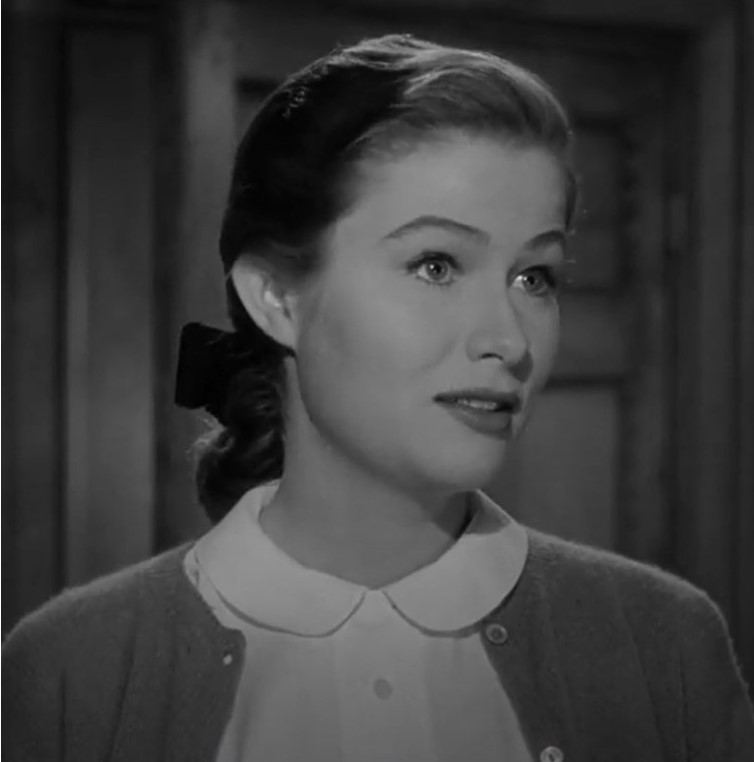The minor character of Betty Schaefer in the 1950 film Sunset Boulevard provides an excellent example of dynamic character space within a film, especially in relation to the film’s main character, Joe Gillis. Using Woloch’s narrative concepts of character space and character systems from The One Vs The Many, we can see through Betty how a minor character’s space can expand, and alter their place within a character system (Woloch). In her first appearance in the film, Betty’s character space is quite limited. She occupies a part in a scene where she makes a critique of Joe Gillis’ script, saying: “I just think a picture should say a little something,” (Sunset Boulevard). In this way, Betty acts as a minor character to reveal something about the main character; that the artistic quality of Joe Gillis’ writing is perhaps not as good as he makes it out to be as the story’s narrator. Betty’s brief appearance towards the beginning of the film allows the reader to experience Joe’s narrative through an alternative pathway, one not offered by the film’s other characters. Her minor appearance here also sets her up for a larger role later in the film.
Betty can also be described as a disruptive minor character, because she develops a stronger influence on the plot by interacting with Joe Gillis (Andersen). As the plot of the film progresses, Betty and Joe develop a more complex relationship as they collaborate on a script together. Because Betty interacts with Joe she is afforded a more expanded character space, allowing the audience to peer into some of her motivations and goals. We learn about her engagement with her fiance, Artie, and her desire to be a successful writer herself as she asks to work on the script with Gillis. This increase in her character space is only done, however, by interacting with the film’s main character. By increasing her interactions with the film’s major character, she also disrupts the narrative. Betty undeniably begins to take up a larger place in the character system, and has great significance as Gillis begins to routinely sneak away from Norma Desmond to work on the script with Betty. The narrative disruption caused by Betty only increases as Gillis’ romantic feelings towards her develop. This, along with Betty’s passion for good script writing are major factors that cause Joe to realize his dissatisfaction with his life of pleasing Norma. Betty’s time spent with Joe leads him to taking action to leave Norma, and trigger the events that eventually lead to his death. While never becoming the main focus of the film, Betty Schaefer shifts into a larger role with a more developed character space by disrupting the narrative of Sunset Boulevard.
Works Cited
Andersen, Joceline. Lecture on servants and Jane Eyre. Moodle, Thompson Rivers University, 31 Jan. 2022, moodle.tru.ca. Video recording.
Sunset Boulevard. Directed by Billy Wilder, performances by William Holden, Gloria Swanson, Nancy Olson, and Cecil B. DeMille, Paramount Pictures, 1950.
Alex Woloch. The One Vs. The Many : Minor Characters and the Space of the Protagonist in the Novel. Princeton University Press, 2003. EBSCOhost, https://search-ebscohost-com.ezproxy.tru.ca/login.aspx?direct=true&db=nlebk&AN=286709&site=eds-live&scope=site.

Provide Feedback